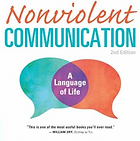
Books Alan learned from
Inspired by the Jewish tradition of learning in someone's memory, here are two books that were important to Alan. He read these books (and others) to help himself become the person he wanted to be. They're the kind of stuff that you can photocopy and use right now in your life. If you'd like, pick one or both. In time, if we want, we can gather and share stories.
Though we were not yet blessed with children, we had hopes and Alan wanted to be ready. He approached the task as a proper engineer-turned-investment analyst, proposing that we read together the most-cited scientific articles on child development. He used my academic login and began printing. I countered that that approach was likely to yield wildly contradictory conclusions, imprint strong opinions based solely on what we happened to read first, plus, seemed tedious. He asked what else I proposed. We called folks whose parenting styles we admired and asked for their book advice. We read a number, but the one that lit both our imaginations was the apparently classic 80’s How To Talk So Kids Will Listen & Listen So Kids Will Talk by Adele Faber and Elaine Mazlish.
At the end of every chapter are little summaries which (to continue the photocopying theme) we photocopied and laminated and placed around the apartment. When we turned on the bathroom faucet we’d be reminded that “you can help children deal with their feelings by listening quietly and attentively.” When we slid open the closet door, we’d see that “instead of evaluating you can describe what you see and feel.”
Turns out (unsurprisingly) that this stuff doesn't just apply to kids. My favorite little laminated card culminates in a letter signed “Your Towel.” I’d try to make myself look at it at moments when I was feeling super pissed at Alan. The towel card had seemingly brilliant (and, of course, nearly impossible-to-live-up-to) suggestions for how to describe and name frustration without igniting blame-defense-escalations.
It’s a lovely book. The basics. Don’t we all want to be able to talk so people actually listen to us and listen so people want to talk to us?
Same as before: Read it by yourself or with a partner, think of Alan, commit to yourself to experiment with whatever speaks to you in some real context in your life—with your kids, with someone else’s kids, at work, in an intimate relationship, with a friend, in random encounters, etc. I’d love to hear what you think.
Nestled amidst the pages are three slips of paper. The first is the receipt from purchasing the book on August 10, 2010: one day before his birthday, a few months before we would meet again, half a year before we would begin dating. The second and third are both from July 17, 2011: ticket stubs from an International Keyboard Festival concert we must have gone to together. I remember it, actually—I love chamber music and after a particularly thrilling passage looked over to realize for the first (of many) times that I would appreciate the concert through sight and sound, happy to hold hands with my fellow who appreciated the opportunity to take a little nap.
Sometime that summer, Alan gave me perhaps one of the best presents I will ever receive. It was a tiny photocopy of a page entitled “How we are likely to feel when our needs are being met” which is filled with three alphabetical columns of incredible words like “curious, dazzled, delighted, eager, ebullient, ecstatic, effervescent, elated, enchanted, encouraged.” On the tiny blue photocopy he drew a smiley face and wrote “Sarah words.” I carried it with me for years, pulling it out to be reminded. What an incredible thing to be seen as warranting those words, what an incredible thing to feel those ways.
So what is this book? It’s called Nonviolent Communication: A Language of Life by Marshall B. Rosenberg. I’m not sure how Alan found it, but he subsequently recommended it to many. What he’d say: read it, it’s good, ignore the bizarre hippy examples in the boxes but the rest is very good.
What I’d say: Read it by yourself or with a partner, think of Alan, commit to yourself to experiment with whatever speaks to you in some real context in your life—at work, in an intimate relationship, with a friend, where there’s already tenderness or where there’s already strain. I’ll reread it, too, (full disclosure: I never got through it all that summer) and would love to talk with you about it once we both have.

